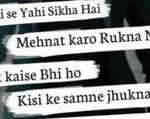Present Perfect Continuous Tense is used to describe an action that started in the past and is still continuing in the present. This tense is commonly used in both English and Hindi to express ongoing actions that have relevance to the present moment.
Present Perfect Continuous Tense ka use hum tab karte hain jab humein kisi aise action ke baare mein baat karni ho jo past mein start hua ho aur ab tak chal raha ho. Is tense ka istemal dono languages mein bahut hota hai aur ye humare daily communication mein important role play karta hai.
Structure of Present Perfect Continuous Tense
In English, the structure of Present Perfect Continuous Tense is:
Subject + has/have + been + verb (ing) + object
For example:
- He has been working for two hours.
- She has been studying since morning.
In Hindi, it can be translated as:
Subject + ने/ने + verb की (रहा/रही/रहे) + है/हैं + समय (से/के लिए)
For example:
- वह दो घंटे से काम कर रहा है। (Woh do ghante se kaam kar raha hai.)
- वह सुबह से पढ़ाई कर रही है। (Woh subah se padhai kar rahi hai.)
When to Use Present Perfect Continuous Tense
Present Perfect Continuous Tense ka use hum tab karte hain jab humein kisi aise action ke baare mein baat karni ho jo kuch waqt se ho raha ho aur ab tak chal raha ho. Yeh tense tab bhi use hota hai jab humein duration ke saath action describe karna ho.
Examples:
- I have been reading this book for three days.(मैं तीन दिनों से यह किताब पढ़ रहा हूँ। – Main teen dino se yeh kitaab padh raha hoon.)
- They have been playing football since morning.(वे सुबह से फुटबॉल खेल रहे हैं। – Ve subah se football khel rahe hain.)
Formation Rules
Present Perfect Continuous Tense banane ke kuch rules hote hain jinhon ka dhyan rakhna zaroori hota hai. Is tense ke structure ko samajhne ke liye hum iske alag-alag components ko detail mein dekhte hain.
1. Subject (कर्ता):
- The subject is the doer of the action.
- English: I, You, He, She, We, They, etc.
- Hindi: मैं, आप, वह, हम, वे, आदि।
2. Has/Have (है/हैं):
- ‘Has’ is used with singular subjects (he, she, it).
- ‘Have’ is used with plural subjects (we, they) and with ‘I’ and ‘you’.
- Hindi mein, ‘है’ singular ke liye aur ‘हैं’ plural ke liye use hota hai.
3. Been (हो रहा है/रही है/रहे हैं):
- ‘Been’ is used after has/have.
- Hindi mein ‘हो रहा है/रही है/रहे हैं’ verbs ka use kiya jata hai.
4. Verb (क्रिया) with ‘ing’:
- The main verb in the sentence is followed by ‘ing’.
- Example: ‘working’, ‘studying’, ‘playing’.
5. Time Duration (समय अवधि):
- The time duration is expressed using ‘for’ and ‘since’.
- Hindi mein ‘से’ aur ‘के लिए’ ka use hota hai.
Examples in Hindi to English Translation
Let’s look at some examples to understand how Present Perfect Continuous Tense is used in sentences.
Example 1:
- English: I have been learning English for two years.
- Hindi: मैं दो साल से अंग्रेजी सीख रहा हूँ।
- Translation: Main do saal se angrezi seekh raha hoon.
Example 2:
- English: She has been cooking since morning.
- Hindi: वह सुबह से खाना बना रही है।
- Translation: Woh subah se khana bana rahi hai.
Example 3:
- English: They have been watching TV for three hours.
- Hindi: वे तीन घंटे से टीवी देख रहे हैं।
- Translation: Ve teen ghante se TV dekh rahe hain.
Example 4:
- English: We have been waiting for the bus since 10 AM.
- Hindi: हम 10 बजे से बस का इंतजार कर रहे हैं।
- Translation: Hum 10 baje se bus ka intezar kar rahe hain.
Usage of ‘For’ and ‘Since’
Present Perfect Continuous Tense mein ‘for’ aur ‘since’ ka use karna bahut important hota hai. ‘For’ ka use duration batane ke liye hota hai jabki ‘since’ ka use starting point batane ke liye hota hai.
- For: ‘For’ is used to indicate a period of time.
Example: For two hours, For a week, For many years. - Since: ‘Since’ is used to indicate the starting point of an action.
Example: Since morning, Since 2010, Since Monday.
Affirmative Sentences
Affirmative sentences wo sentences hote hain jo positive information provide karte hain. Present Perfect Continuous Tense mein affirmative sentences ko simple sentence structure follow karte hue banaya jata hai.
Structure:
- Subject + has/have + been + verb (ing) + object + time
Examples:
- English: She has been reading a novel for an hour.
- Hindi: वह एक घंटे से उपन्यास पढ़ रही है।
- Translation: Woh ek ghante se upanyaas padh rahi hai.
- English: We have been working on this project since January.
- Hindi: हम जनवरी से इस प्रोजेक्ट पर काम कर रहे हैं।
- Translation: Hum January se is project par kaam kar rahe hain.
Negative Sentences
Negative sentences wo sentences hote hain jo kisi action ke na hone ya na karne ki baat karte hain. Present Perfect Continuous Tense mein negative sentences ko banane ke liye ‘not’ ka use hota hai.
Structure:
- Subject + has/have + not + been + verb (ing) + object + time
Examples:
- English: He has not been studying for two hours.
- Hindi: वह दो घंटे से पढ़ाई नहीं कर रहा है।
- Translation: Woh do ghante se padhai nahi kar raha hai.
- English: They have not been eating since morning.
- Hindi: वे सुबह से खाना नहीं खा रहे हैं।
- Translation: Ve subah se khana nahi kha rahe hain.
Interrogative Sentences
Interrogative sentences wo sentences hote hain jo kisi action ke baare mein sawal karte hain. Present Perfect Continuous Tense mein interrogative sentences ko banane ke liye ‘has/have’ ko subject ke aage rakha jata hai.
Structure:
- Has/Have + subject + been + verb (ing) + object + time?
Examples:
- English: Has she been working since 9 AM?
- Hindi: क्या वह सुबह 9 बजे से काम कर रही है?
- Translation: Kya woh subah 9 baje se kaam kar rahi hai?
- English: Have they been playing cricket for three hours?
- Hindi: क्या वे तीन घंटे से क्रिकेट खेल रहे हैं?
- Translation: Kya ve teen ghante se cricket khel rahe hain?
Practice Exercises
Exercise 1: Translate the following sentences from Hindi to English:
- वह दो घंटे से गाना गा रही है।
- हम सुबह से खेल रहे हैं।
- मैं पिछले साल से इस किताब को पढ़ रहा हूँ।
- वे चार दिनों से इस पर काम कर रहे हैं।
- तुम कितनी देर से इंतजार कर रहे हो?
Exercise 2: Translate the following sentences from English to Hindi:
- I have been studying English for three years.
- She has not been sleeping since last night.
- We have been waiting for the train for half an hour.
- Has he been working on this project for a week?
- They have been playing football since morning.
Present Perfect Continuous Tense ka use English aur Hindi dono languages mein hota hai. Is tense ka istemal hum ongoing actions ko describe karne ke liye karte hain jo past mein start hue the aur ab tak chal rahe hain. Agar hum is tense ke rules aur structure ko samajh lein toh hum apne daily communication ko aur effective bana sakte hain.
FAQs
Q1: Present Perfect Continuous Tense kab use hota hai?
A1: Is tense ka use tab hota hai jab koi action past mein start hua ho aur ab tak chal raha ho.
Q2: Present Perfect Continuous Tense ka structure kya hota hai?
A2: Structure hota hai: Subject + has/have + been + verb (ing) + object + time.
Q3: Hindi mein Present Perfect Continuous Tense ko kaise translate karte hain?
A3: Hindi mein is tense ko कर्ता + ने + क्रिया + रहा/रही/रहे + है/हैं + समय (से/के लिए) ki form mein translate karte hain.
Q4: ‘For’ aur ‘Since’ ka use kab hota hai?
A4: ‘For’ duration batane ke liye aur ‘Since’ starting point batane ke liye use hota hai.
Q5: Kya Present Perfect Continuous Tense mein ‘not’ ka use hota hai?
A5: Haan, negative sentences banane ke liye ‘not’ ka use hota hai.
Additional Tips
- Tip 1: Practice makes perfect! Regularly use and practice this tense in both languages to improve fluency.
- Tip 2: Try forming sentences with different subjects and verbs to get a better understanding of how this tense works.
Latest Posts
- Step-by-step guide to download and apply for jee mains admit card 202
- Comprehensive 2025 government holidays and recruitment details for job seekers
- JEE Mains Admit Card 2025: Your Step-by-Step Guide to Downloading the Hall Ticket
- Everything You Need to Know About 2025 Government Holidays Recruitment
- Comprehensive Guide to rrb d group recruitment 2025 – Eligibility, Vacancies, and Application
- Detailed guide to nps trust recruitment 2025 vacancies, eligibility and apply process
- Comprehensive guide to hpcl recruitment 2025 notification, vacancies, and application process
- ignou bed admission 2025 complete recruitment guide with eligibility and process
- Comprehensive Guide to Indian Army Agniveer Recruitment 2025 Notification and Jobs
- Everything You Must Know About CBSE Board Exams 2025 Changes & New Rules





